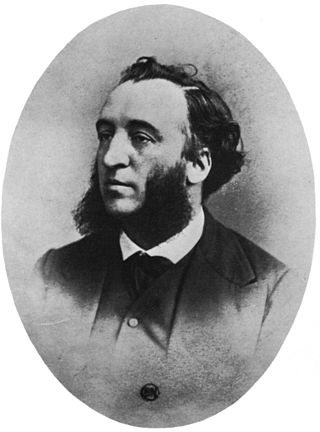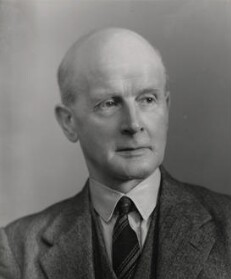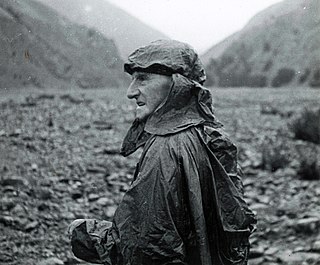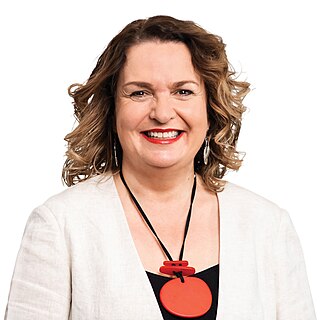
The Atmore Report, 1930 was a parliamentary report into the New Zealand education system which became a landmark document and akin to progressive educationists' charter.

The Atmore Report, 1930 was a parliamentary report into the New Zealand education system which became a landmark document and akin to progressive educationists' charter.
In November 1929 saw the appointment of a New Zealand Parliamentary Committee, with a wide range of reference to sit during the recess-the so-called Parliamentary Recess Education Committee-and "consider all matters relating to education and public instruction generally". [1]
The Recess Education Committee's Report was presented in August 1930. The committee recommended that both primary and secondary education should become more practical and less academic; less tethered to examinations. It also proposed that section 10 of the Education Amendment Act 1920 (which would make school attendance compulsory for every child from seven to fifteen) become operative. [2]
Harry Atmore, the New Zealand Minister of Education, was anxious to realise the policy and ideas set out in the Recess Committee's Report.
Before it appeared in print Atmore had already sanctioned revision of the primary school syllabus in a manner designed to allow "teachers as much freedom as they are competent to take to organise their teaching in any way that most appeals to them". [3]
In September 1931, the progressive Harry Atmore resigned. He was replaced as Minister of Education by Robert Masters who cut expenses to the bone. In the next fifteen months teachers' salaries were reduced, the school admission age was raised from five to six, and many students left school to assist their parents in the economic crisis.
Atmore's plans for creating a new order in the schools had been swamped by the wave of retrenchment of the early 1930s. But Peter Fraser, as Labour's Minister of Education in the later 1930s supported many of the measures, including making school attendance compulsory from seven to fifteen which occurred in 1944. [4]
The Atmore Report played a crucial role in shaping the New Zealand Education System and is widely regarded as a charter for progressive educationists.
The education system in New Zealand implements a three-tier model which includes primary and intermediate schools, followed by secondary schools and by tertiary education at universities and polytechnics. The academic year in New Zealand varies between institutions, but generally runs from early February until mid-December for primary schools, late January to late November or early December for secondary schools and polytechnics, and from late February until mid-November for universities.

Secondary education is the last six or seven years of statutory formal education in the United States. It culminates with twelfth grade. Whether it begins with sixth grade or seventh grade varies by state and sometimes by school district.

Van Asch Deaf Education Centre was located in Truro Street, Sumner, Christchurch, New Zealand. It was a special school for deaf children, accepting both day and residential pupils, as well being as a resource centre providing services and support for parents, mainstream students and their teachers in the South Island and the Lower North Island.

Compulsory education refers to a period of education that is required of all people and is imposed by the government. This education may take place at a registered school or at other places.

The Education Act 1918, often known as the Fisher Act, is an Act of the Parliament of the United Kingdom. It was drawn up by H. A. L. Fisher. Herbert Lewis, Parliamentary Secretary to the Board of Education, also played a key role in drawing up the Act. The Act applied only to England and Wales; a separate "Education (Scotland) Act 1918" applied for Scotland.

Harry Atmore was a New Zealand Independent Member of Parliament for Nelson in the South Island. He held the Nelson seat as an Independent for a total of thirty years from 1911 to 1914 and then from 1919 to his death in 1946. He was Minister of Education and Minister in charge of the Department of Scientific and Industrial Research (DSIR) in Sir Joseph Ward's United Government of 1928 to 1931.
Frank Tate was an Australian educationist who is best remembered for his efforts in expanding secondary education in Victoria, Australia.

The Jules Ferry Laws are a set of French laws which established free education in 1881, then mandatory and laic (secular) education in 1882. Jules Ferry, a lawyer holding the office of Minister of Public Instruction in the 1880s, is widely credited for creating the modern Republican school. The dual system of state and church schools that were largely staffed by religious officials was replaced by state schools and lay school teachers. The educational reforms enacted by Jules Ferry are often attributed to a broader anti-clerical campaign in France.
Education in the Cook Islands has close ties with the educational system of New Zealand. Primary and secondary education are free and attendance is compulsory for children between the ages of five and fifteen. Some degree courses are provided by the University of the South Pacific.

The First Labour Government of New Zealand was the government of New Zealand from 1935 to 1949. Responsible for the realisation of a wide range of progressive social reforms during its time in office, it set the tone of New Zealand's economic and welfare policies until the 1980s, establishing a welfare state, a system of Keynesian economic management, and high levels of state intervention. The government came to power towards the end of, and as a result of, the Great Depression of the 1930s, and also governed the country throughout World War II.

Education in Zimbabwe under the jurisdiction of the Ministry of Primary and Secondary Education for primary and secondary education, and the Ministry of Higher and Tertiary Education, Science and Technology Development for higher education. Both are regulated by the Cabinet of Zimbabwe. The education system in Zimbabwe encompasses 13 years of primary and secondary school and runs from January to December. The school year is a total of 40 weeks with three terms and a month break in-between each term.

Practically all children attend Quranic school for two or three years, starting around age five; there they learn the rudiments of the Islamic faith and some classical Arabic. When rural children attend these schools, they sometimes move away from home and help the teacher work his land.

Kura kaupapa Māori are Māori-language immersion schools in New Zealand, where the philosophy and practice reflect Māori cultural values with the aim of revitalising Māori language, knowledge and culture. Kura kaupapa Māori are established under the Education Act (1989). The term kaupapa Māori is used by Māori to mean any particular plan of action created by Māori to express Māori aspirations, values and principles.
The Right of Children to Free and Compulsory Education Act or Right to Education Act (RTE) is an Act of the Parliament of India enacted on 4 August 2009, which describes the modalities of the importance of free and compulsory education for children between the age of 6 to 14 years in India under Article 21A of the Indian Constitution. India became one of 135 countries to make education a fundamental right of every child when the act came into force on 1 April 2010. The title of the RTE Act incorporates the words 'free and compulsory'. 'Free education' means that no child, other than a child who has been admitted by his or her parents to a school which is not supported by the appropriate Government, shall be liable to pay any kind of fee or charges or expenses which may prevent him or her from pursuing and completing elementary education. 'Compulsory education' casts an obligation on the appropriate Government and local authorities to provide and ensure admission, attendance and completion of elementary education by all children in the 6-14 age group. With this, India has moved forward to a rights based framework that casts a legal obligation on the Central and State Governments to implement this fundamental child right as enshrined in the Article 21A of the Constitution, in accordance with the provisions of the RTE Act.17.

Sir Frederick Clarke was an English educationist who was Director of the Institute of Education in the University of London between 1936 and 1945.

James Ernest Strachan was a New Zealand educator. He was born in Dunedin, New Zealand, in 1883. He was the principal of Rangiora High School from 1917–1948, during which time he abolished corporal punishment and the prefect system and introduced the school council, among others.
Charter schools in New Zealand, also known as partnership schools or kura hourua in te reo Māori, were schools that received government funding similar to state schools but were subject to fewer rules and regulations from the Ministry of Education. They were free and open for any students to attend. Charter schools had the autonomy to set their own curriculum, qualifications, pay rates for teachers, school-hours and school terms. The schools were operated by sponsors such as Māori Iwi, not-for-profit organisations, businesses or existing education providers.
In New Zealand, a state-integrated school is a former private school which has integrated into the state education system under the Private Schools Conditional Integration Act 1975, becoming a state school while retaining its special character. State-integrated schools were established by the Third Labour Government in the early 1970s as a response to the near-collapse of the country's then private Catholic school system, which had run into financial difficulties.

Janette Rose Tinetti is a New Zealand politician and a Member of Parliament in the House of Representatives for the Labour Party.

The history of state education in Queensland commences with the Moreton Bay penal settlement of New South Wales in Australia, which became the responsibility of the Queensland Government after the Separation of Queensland from New South Wales in 1859.